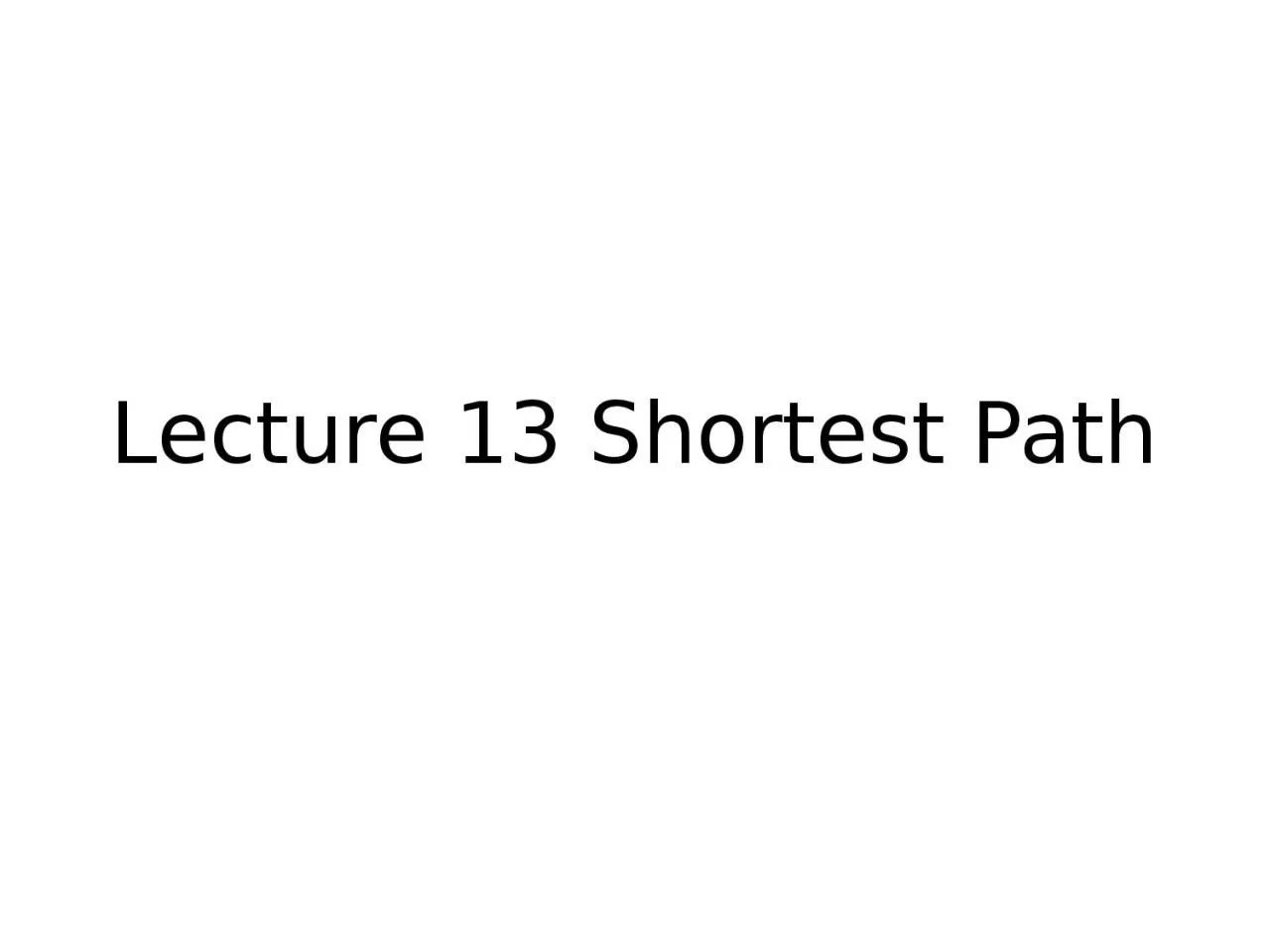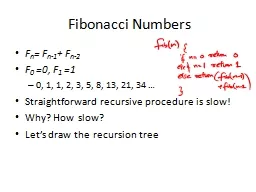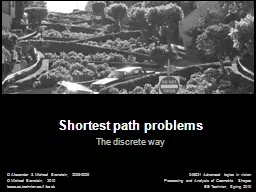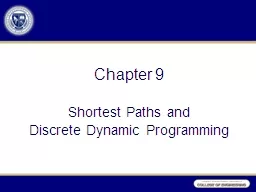PPT-Lecture 13 Shortest Path
Author : kylie | Published Date : 2023-06-22
Shortest Path problem Given a graph G edges have length w uv gt 0 distance travel time cost Length of a path is equal to the sum of edge lengths Goal Given source
Presentation Embed Code
Download Presentation
Download Presentation The PPT/PDF document "Lecture 13 Shortest Path" is the property of its rightful owner. Permission is granted to download and print the materials on this website for personal, non-commercial use only, and to display it on your personal computer provided you do not modify the materials and that you retain all copyright notices contained in the materials. By downloading content from our website, you accept the terms of this agreement.
Lecture 13 Shortest Path: Transcript
Download Rules Of Document
"Lecture 13 Shortest Path"The content belongs to its owner. You may download and print it for personal use, without modification, and keep all copyright notices. By downloading, you agree to these terms.
Related Documents














